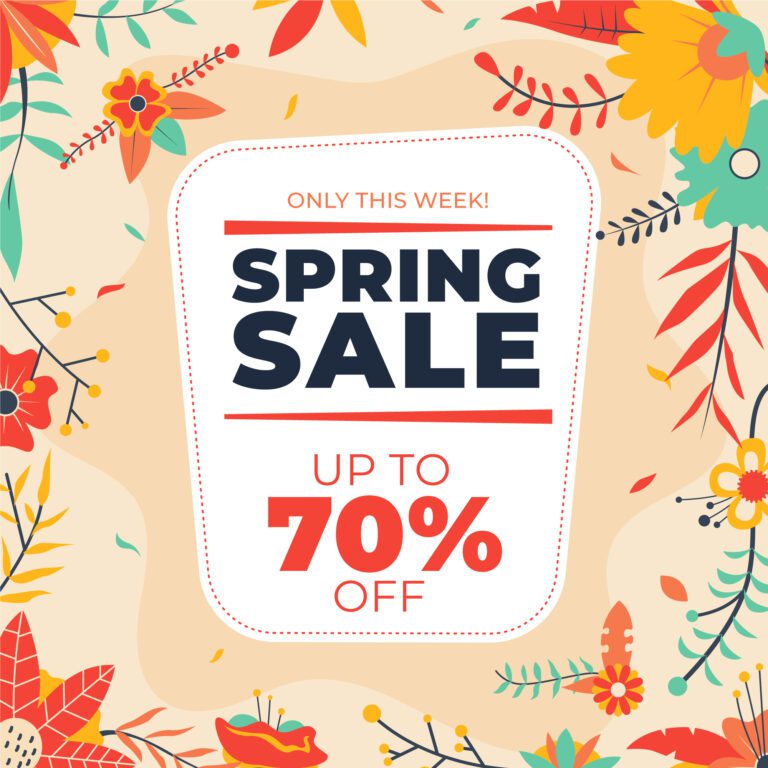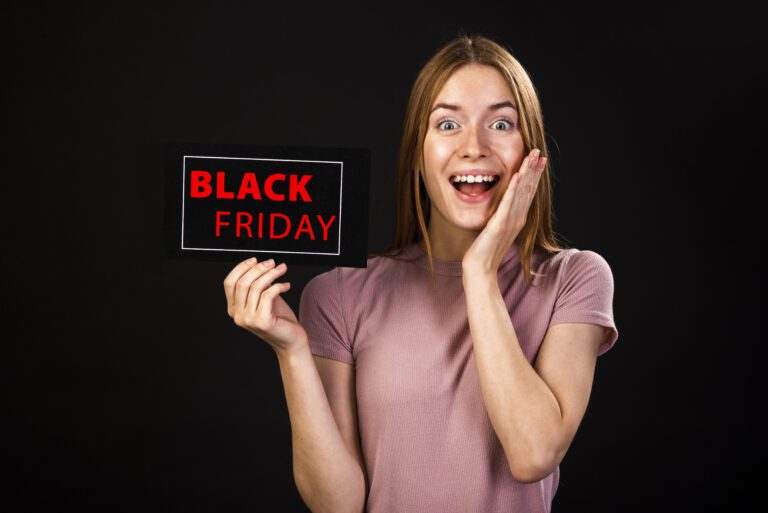FOMO Marketing Guide with Examples

I hope you enjoy this blog post. If you want Hello Bar to grow your leads, click here.
Author:
Mansi
Published
September 24, 2025

Table of Contents
Nobody likes feeling left out. That feeling has a name: FOMO — Fear of Missing Out. Businesses use it all the time without you even noticing. A product marked “Only 3 left in stock.” A timer ticking down on a discount. A banner that says “400 people booked this hotel today.” That’s all FOMO marketing in action.
The reason it works is simple: people don’t want to lose an opportunity. They’d rather take quick action than regret later. And businesses that know how to use this tool can push customers to buy, sign up, or act much faster.
This guide walks through what FOMO marketing is, why it works, and the different ways you can apply it. I’ll also share plenty of FOMO marketing examples to show what it looks like in real campaigns.
What is FOMO Marketing?
FOMO marketing is when you create urgency or scarcity so people feel they might miss something valuable if they wait. It could be missing a deal, a limited edition product, or even an experience everyone else seems to be part of.
Instead of slowly thinking it over, FOMO nudges people toward quick action. They don’t want to be left behind. That’s the psychology behind it.
At its core, FOMO marketing does two things:
- Shows that something is limited (by time, quantity, or access).
- Signals that others are already taking part.
Both of those trigger the fear of missing out.
Why Businesses Use FOMO Marketing
People hate loss more than they love gain. Behavioral economists call it “loss aversion.” If you think about it, that’s exactly what FOMO marketing plays on.
Here’s why it’s so common:
- Faster decisions. A deal that ends in 3 hours doesn’t give customers time to delay.
- Higher sales. If someone thinks stock will run out, they grab it now.
- More engagement. A trending product or event looks exciting when others are already in.
You’ll see FOMO across retail, travel, SaaS, and even food delivery apps. And it works because it’s tied to human behavior, not trends or technology.
Key Strategies in FOMO Marketing
Let’s break down the major ways brands put FOMO to work. For each, we’ll share some FOMO marketing examples.
1) Limited-time offers done right
When it works: You have a clean price hook or a seasonal push. Works best for items with clear value and simple comparisons.
How to implement:
- Set a real end date and lock it in your backend so the discount stops automatically.
- Show the end time in the customer’s local timezone.
- Use one clear price message. Example: “Ends Tuesday 7 pm. Today only price: $39.”
Copy ideas:
- “Ends tonight at 8 pm. After that, back to $59.”
- “Sunday special. Price resets at midnight.”
Tracking:
- Compare conversion rate for sessions that saw the timer vs sessions that didn’t.
- Track clicks on “See details” next to the offer. If many click, your offer might be confusing.
Mistakes:
- Moving the goalpost. If the sale “extends” every week, trust dies.
- Hiding the rules. Always show what’s included and excluded.
FOMO marketing examples: daily flash sales with a visible countdown on the product page and cart page, not just the homepage.
2) Low-stock signals that are honest
When it works: You actually have limited units or slow restock.
How to implement:
- Connect inventory to your storefront so the message only shows when true.
- Set thresholds. Example: show “Only 3 left” below 5 units, “Back soon” at 0.
Copy ideas:
- “Only 2 left. Next restock in 10–14 days.”
- “Low stock in size M.”
Tracking:
- Watch add-to-cart rate when the low-stock badge appears.
- Monitor returns. If pressure drives bad fits, fix your sizing cues.
Mistakes:
- Static “Only 3 left” that never changes. People notice.
FOMO marketing examples: product cards that flip to “2 left in XL” as the user chooses a size.
3) Real-time social proof without noise
When it works: You have steady purchase or sign-up volume.
How to implement:
- Pull recent orders or sign-ups in real time and anonymize.
- Rate-limit the display. Showing something every 5 seconds is annoying.
- Only show relevant items. If I’m on a jacket page, show jacket activity.
Copy ideas:
- “Ana in Austin bought this 14 minutes ago.”
- “71 people signed up today.”
Tracking:
- Conversion rate for sessions that saw a proof event vs those that didn’t.
- Bounce rate changes after adding social proof. Noise increases bounce.
Mistakes:
- Fake locations or names. Just don’t.
FOMO marketing examples: a small corner message with last 3 activities, clickable to reviews.
4) Exclusive access that feels earned

When it works: You can offer something others can’t get yet.
How to implement:
- Set rules for early access. Example: email subscribers 48 hours early.
- Limit quantity or time, not both, unless you can deliver.
- Make the “why” clear: loyal customers, waitlist, members.
Copy ideas:
- “48-hour head start for subscribers.”
- “Member window ends Friday noon.”
Tracking:
- New sign-ups driven by early access.
- Percentage of inventory sold during the window.
Mistakes:
- Making “exclusive” available to everyone. Keep it real.
FOMO marketing examples: a private link sent to a segment with a simple queue counter.
5) “Missed out” cues that guide the next step
When it works: High demand items or bookings that sell out often.
How to implement:
- When an item is sold out, don’t dead-end. Offer waitlist or similar items in stock now.
- If it’s a service slot, show the next available slot.
Copy ideas:
- “Sold out. Next drop Wednesday 10 am. Get a reminder.”
- “That room is gone. These are still open at similar price.”
Tracking:
- Waitlist sign-ups. If high, consider higher first-batch volume.
- Click-through to alternative items.
Mistakes:
- Loud red banners without a recovery path.
FOMO marketing examples: a sold-out banner that immediately shows two in-stock alternatives and a waitlist form.
6) Countdowns in the cart, not just the homepage
When it works: Time-limited price or perk. Works best near checkout.
How to implement:
- Show a small timer in cart and checkout. Keep it calm, not blinking.
- Pause on inactivity to avoid punishing slow readers.
Copy ideas:
- “This price holds for 12 more minutes.”
- “Checkout in 9 minutes to keep the bundle price.”
Tracking:
- Cart completion rate before and after.
- Abandonment tagged by “timer displayed.”
Mistakes:
- Aggressive flashing timers. Feels scammy.
FOMO marketing examples: a clean progress bar with time remaining, plus a “Need more time” button that extends once.
7) Popularity badges that are earned

When it works: You have real data on bestsellers, trending, or most reviewed.
How to implement:
- Decide what “bestseller” means. Top 10 percent of sales in 30 days is simple and fair.
- Update badges weekly.
Copy ideas:
- “Bestseller this month.”
- “Most reviewed in Jackets.”
Tracking:
- Lift in click-through when the badge shows.
- Impact on less-badged items. If they tank, rotate exposure.
Mistakes:
- Over-badging everything until nothing stands out.
FOMO marketing examples: category pages with a small “Trending” tag tied to 7-day sales velocity.
8) Expiring content with a clear replay rule
When it works: Events, drops, lessons, or live demos.
How to implement:
- Set availability windows. Example: live event Tuesday, replay for 48 hours, then gone.
- Gate with email so you can notify before it expires.
Copy ideas:
- “Replay available for 2 days.”
- “Next live session on Friday. Seats limited.”
Tracking:
- Attendance curve by hour. Pull the replay window if nobody watches after day one.
- Email open rate on “Replay ends soon.”
Mistakes:
- Saying “last chance” weekly. Don’t dilute the phrase.
FOMO marketing examples: webinar pages with a countdown to replay expiry and a clean CTA to the next live slot.
9) Early-bird rewards that scale down
When it works: Launches, workshops, limited cohorts.
How to implement:
- Tier your incentives. First 50 get bonus A, next 100 get bonus B, then nothing.
- Show how many spots remain in each tier.
Copy ideas:
- “First 50 get the case. 18 left.”
- “Early price ends after 100 sign-ups.”
Tracking:
- Distribution across tiers. If first tier is gone in minutes, you underpriced or over-rewarded.
- Refunds from rushed buyers. Adjust messaging if it spikes.
Mistakes:
- Hiding the reward difference between tiers.
FOMO marketing examples: a bar that fills as spots are claimed, with the current tier highlighted.
10) User-generated content that shows real use
When it works: Products people like to show off or explain.
How to implement:
- Pull tagged photos or reviews into product pages.
- Ask specific questions in reviews to get helpful detail.
Copy ideas:
- “How it looks in real homes.”
- “Why people kept it after 30 days.”
Tracking:
- Time on page after UGC section added.
- Photo review share of total reviews.
Mistakes:
- Only showing perfect photos. Mix real-world shots.
FOMO marketing examples: a grid of customer photos with short captions like “Week 6 review” that show lived experience.
11) Event scarcity with caps that mean something
When it works: Limited seats make the experience better.
How to implement:
- Cap attendance for real reasons. Example: live Q&A with 40 people max so all get airtime.
- Show seats remaining and auto-close at zero.
Copy ideas:
- “40 seats. 7 left.”
- “Small group Q&A. Closes at full.”
Tracking:
- No-show rate. Overbook if no-shows are consistent.
- Post-event satisfaction vs group size.
Mistakes:
- Overstuffing because demand is high. It ruins the promise.
FOMO marketing examples: a workshop page with “Spots left: 4” tied to the registration system.
12) Exit-intent, used once and kept simple

When it works: You want a second chance without being pushy.
How to implement:
- Trigger once per session when the cursor heads for the tab bar or back button.
- Offer either a small discount or a useful guide. Not both.
Copy ideas:
- “Leaving already. 10 percent off if you order now.”
- “Grab the sizing guide. No email needed.”
Tracking:
- Conversions from exit-intent vs total.
- Unsubscribe rate if you collect emails there.
Mistakes:
- Stacking multiple exit popups. One chance only.
FOMO marketing examples: a gentle overlay that offers a now-or-never incentive with a clear close button.
13) Free shipping thresholds that feel reachable
When it works: Your average order value is close to a clean threshold.
How to implement:
- Set threshold slightly above average order. If AOV is $42, try free shipping at $49.
- Show a progress meter in cart.
Copy ideas:
- “$11 away from free shipping.”
- “Free shipping ends tonight at $59+.”
Tracking:
- AOV change after adding threshold.
- Cart exits when people are far from threshold.
Mistakes:
- Threshold too high so it feels impossible.
FOMO marketing examples: a cart bar that updates as people add items, with one suggested add-on to cross the line.
14) Direct “don’t miss it” language
When it works: Clear, single-decision promotions.
How to implement:
- Put the line near the decision point, not at the top of the page.
- Keep it one sentence.
Copy ideas:
- “Don’t miss the weekend price.”
- “This bundle retires Sunday.”
Tracking:
- Click-through when the line is present vs removed.
- Heatmaps to confirm it’s seen.
Mistakes:
- Overuse. If everything is “don’t miss,” nothing is.
FOMO marketing examples: a simple line near the Add to Cart button that appears during the promo window only.
15) Claim meters that show demand
When it works: Deals with limited quantity.
How to implement:
- Show a percent-claimed bar that updates live.
- Add a small timestamp: “Updated 2 minutes ago.”
Copy ideas:
- “78 percent claimed.”
- “12 left at this price.”
Tracking:
- Speed of claims. Use it to forecast future batches.
- Drop-off when bar is near empty. Consider a “next drop” link.
Mistakes:
- Bars that jump randomly. Feels fake.
FOMO marketing examples: a progress bar on deal pages that aligns with actual inventory, not a script.
16) Time-limited content upgrades
When it works: Content-heavy sites with downloadable extras.
How to implement:
- Offer a checklist, template, or short PDF for 48 hours after reading.
- Deliver immediately without a long email funnel.
Copy ideas:
- “Get the 1-page setup checklist for 48 hours.”
- “Download expires Wednesday.”
Tracking:
- Download rate vs page views.
- Return visits as the clock runs out.
Mistakes:
- Hiding the upgrade behind too many clicks.
FOMO marketing examples: a simple inline banner inside the article with a countdown to the end of availability.
17) Seasonal scarcity with honest timing
When it works: Holidays, weather-driven items, or styles tied to a period.
How to implement:
- Publish a clear calendar. Pre-season, peak, last call.
- Use “last call” messaging only for the actual last call.
Copy ideas:
- “Last week for the summer color.”
- “Holiday shipping cut-off: Dec 18.”
Tracking:
- Sales spikes around last-call notices.
- Late delivery issues. If high, move the cut-off earlier.
Mistakes:
- Extending “holiday” into January. People notice.
FOMO marketing examples: a last-call section on the category page with items that won’t return until next season.
18) Pricing changes with real dates
When it works: SaaS plans, subscriptions, or materials costs rising.
How to implement:
- Announce once with a firm date. Offer grandfathering if fair.
- Explain the change plainly without fluff.
Copy ideas:
- “New pricing starts Oct 10. Current customers keep today’s price.”
- “Lock in $19 before it moves to $24.”
Tracking:
- Sign-ups before the change.
- Churn after the change. If churn spikes, communication failed.
Mistakes:
- Surprise price hikes with no notice.
FOMO marketing examples: a plan table with a small banner that shows “Price changes in 5 days” plus a direct link to lock in.
19) Real-time activity counters that matter
When it works: High-traffic products, tickets, or bookings.
How to implement:
- Show live viewers or purchases per 10-minute window.
- Cap the maximum shown to avoid crazy spikes.
Copy ideas:
- “34 people viewed this in the last hour.”
- “9 booked in the last 10 minutes.”
Tracking:
- Conversion rate correlation with activity spikes.
- Server load from live calls. Cache wisely.
Mistakes:
- Showing huge numbers that look made up.
FOMO marketing examples: hotel and event pages showing viewers right now and bookings in the last hour.
20) One carefully designed popup to tie it together
You asked to keep popups to one point, so here it is.
When it works: You need a gentle nudge at critical moments.
How to implement:
- Use one popup type per goal. Example: exit-intent for a last-chance code. Do not stack with scroll or time-based popups in the same session.
- Make it skippable. The close button should be obvious.
- Keep the offer simple: small discount, free shipping today, or a quick guide.
Copy ideas:
- “Save 10 percent if you finish now.”
- “Free shipping if you order in the next 15 minutes.”
Tracking:
- Popup view to conversion rate.
- Post-purchase return rate for orders from the popup. If returns rise, your offer is pushing the wrong people.
Mistakes:
- Multiple popups chasing the same user. Pick one.
FOMO marketing examples: a single exit popup on product and cart pages that offers a time-bound perk with a clear timer and one field.
How to Use FOMO Marketing Responsibly
One thing worth saying: don’t overdo it. Fake scarcity or misleading urgency will hurt trust. If customers find out your “only 3 left” banner shows up every day, they won’t believe you again.
Keep it real:
- Only use FOMO where the limit is true.
- Don’t flood users with constant timers and popups.
- Make sure the deal or experience actually has value.
Good FOMO marketing nudges customers without tricking them.
Also read our guide on Email Marketing Automation Mistakes That Hurt Conversions
Conclusion
FOMO marketing works because people don’t want to be left behind. The best FOMO marketing examples are simple: timers, low stock, exclusivity, real customer activity. Used well, they speed up decisions and drive results. Used poorly, they break trust. The difference is honesty.




